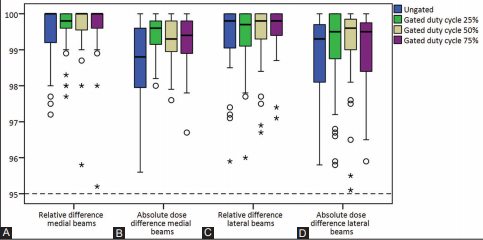Evaluation of patient specific quality assurance of gated field in field radiation therapy technique using two-dimensional detector array
DOI:
https://doi.org/10.17532/jhsci.2020.886Keywords:
Patient-specific quality assurance , gated radiotherapy , detector arrayAbstract
Introduction: Gated tangential field-in-field (FIF) technique is used to lower the dose to organs at risk for breast cancer radiotherapy (RT). In this study, the authors investigated the accuracy of the delivered treatment plan with and without gating using a two-dimensional detector array for patient-specific verification purposes.
Methods: In this study, a 6MV beams were used for the merged FIF RT (forward Intensity Modulated Radiation Therapy). The respiration signals for gated FIF delivery were obtained from the one-dimensional moving phantom using the real-time position management (RPM) system (Varian Medical Systems, Palo Alto, CA). RPM system used for four-dimensional computed tomography scanner light-speed, GE is based on an infrared camera to detect motion of external 6-point marker. The beams were delivered using a Clinac iX (Varian Medical Systems, Palo Alto, CA) with the multileaf collimator Millennium 120. The MapCheck2 (SunNuclear, Florida) was used for the evaluation of treatment plans. MapCheck2 was validated through a comparison with measurements from a farmer-type ion chamber. Gated beams were delivered using a maximum dose rate with varying duty cycles and analyzed the MapCheck2 data to evaluate treatment plan delivery accuracy.
Results: Results of the gamma passing rate for relative and absolute dose differences for all ungated and gated beams were between 95.1% and 100%.
Conclusion: Gated FIF technique can deliver an accurate dose to a detector during gated breast cancer RT. There is no significance between gated and ungated patient-specific quality assurance (PSQA); one can use ungated PSQA for verification of treatment plan delivery
Downloads

Downloads
Published
License
Copyright (c) 2020 Dražan Jaroš, Goran Kolarević, Aleksandar Kostovski, Milovan Savanović, Dejan Ćazić, Goran Marošević, Nataša Todorović, Dragoljub Mirjanić

This work is licensed under a Creative Commons Attribution 4.0 International License.










